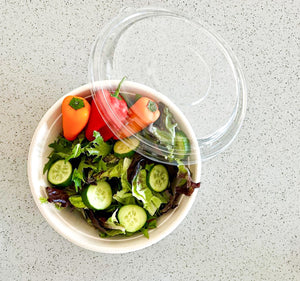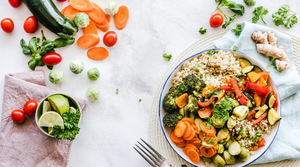Does this mean following a low Glycemic Index (GI) diet will help us be healthy and lose weight?
And if you use GI as a measure of what is healthy, do you know that a candy bar, a supreme pizza and your favourite Betty Crocker chocolate cake are all low glycemic foods! A dream come true for those of us with a sweet tooth and fast food craze!




It turns out that the science of the glycemic index isn't that simple or perfect!
A recap from the previous blog – the glycemic index (GI) ranks foods based on the impact they have on your blood sugar. The higher a food's glycemic index, the higher it raises the amount of glucose in your blood stream. Low GI foods have GIs of 55 or less; medium GI foods have GIs of 56-69 and high GI foods have GIs of 70 or more.
Following a diet of carbohydrate-rich foods with a low GI and fewer carbohydrate-rich foods with a high GI without making any other changes to your diet or lifestyle, will have very little effect on weight loss.
Unfortunately, one can’t escape the simple formula of calories in and calories out
While the glycemic index tells you how rapidly a food raises blood sugar, it doesn't tell you how much digestible carbohydrate is in that food. To understand how the food will affect blood sugar levels, you need to know both. That's where the glycemic load (GL) helps. It takes into account a food's portion size as well as its GI. You can calculate a food's glycemic load by dividing its GI by 100 and then multiplying that by its grams of digestible carbohydrates (total carbs minus fiber).
Glycemic Index – Flaws
- Twix bar has a lower GI than watermelon. Watermelon has a GI of 72 but a GL of 4 as most of it is water rather than carbohydrates. But per serving the watermelon is lower in calories and higher in nutrients such as potassium, vitamin A and C. The GI of a food is determined based on 50 grams of digestible carbohydrates, which include starch and sugar but not fiber. This is the amount of carbs in about three-quarters of a king-size Twix but you will need to eat 5 cups of diced watermelon to match that number.
Note: Portions matter. A single serving of the fruit has significantly less sugar than a candy bar.
- Even when the sugar content is high, a food can have a low GI, A king-size Twix has 46 grams of sugar and yet a low GI. This is because not all types of sugar cause spikes in blood glucose. Glucose and starch have the greatest impact on your blood sugar. Sweeteners, such as sucrose (table sugar) and high-fructose corn syrup, are only about half glucose; and fructose has just a tiny effect on blood sugar. So only a portion of the sweetener in a Twix bar is high glycemic.
Note: Even so, low GI junk food is packed with excess calories that will cause your bugling belly.
- The glycemic index of a food is a range and the actual value can vary by up to 54 percent from person to person depending on the fitness level. Exercise uses the glucose stored in your muscles. And after a workout the body replenish glucose to your muscles from the blood stream thus reducing blood-glucose levels quickly.
Note: The more active you are and more fit, the less you need to worry about how foods affect your blood sugar. This is also why the best time to eat fast-absorbing carbs is just before, during, and right after your workout.
Glycemic Index – Myths
- A low GI diet will lead to weight loss.
- It is all about moderation.
- You still need to factor calories into the equation if you want to lose weight and the glycemic index has nothing to do with calories. Some low-glycemic foods are high in calories e.g. nuts
- GI is only one component to consider when choosing which foods to include in your diet. Other considerations are vitamins, minerals, fiber, antioxidants, total carbohydrate amount, fat content, type of fat, and sodium.
- Weight gain occurs for a variety of other reasons including too many calories, insulin resistance, decreased metabolism, and health problems.
- Low-glycemic foods are always nutritious and high-glycemic foods have little or no nutritional value
- Nutritious food is high in nutrients like vitamins, minerals, fiber, essential fats, and protein. Many low-glycemic foods are nutritious, because they are often whole foods like fruits, vegetables and whole grains. Some lower-glycemic foods, such as candy bars, are definitely not nutritious.
- Some high-glycemic foods contain essential vitamins and minerals and fiber. For example, whole grains and potatoes.
The bottom line on the GI is....
- Most meals we eat have not only fast-absorbing carbs but also protein, fiber and fat. Both fat and fiber lower your blood-sugar response hence making the GI an unreliable tool.
- The GI has added a layer of complication in our lives. All we need is to just eat whole foods – meat, fruit, vegetables, dairy and whole grains instead of junk food; thus having a diet rich in vitamins , minerals and other healthy nutrients.
- Calories are important. So eat in moderation and stay lean and healthy.







